Shengsen Wu
Switchable Representation Learning Framework with Self-compatibility
Jun 16, 2022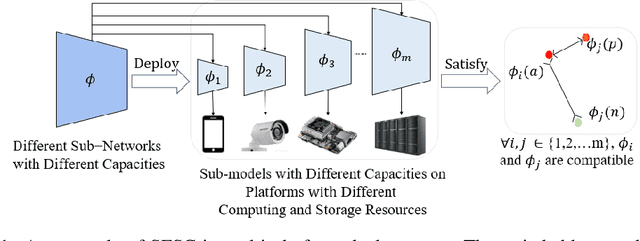


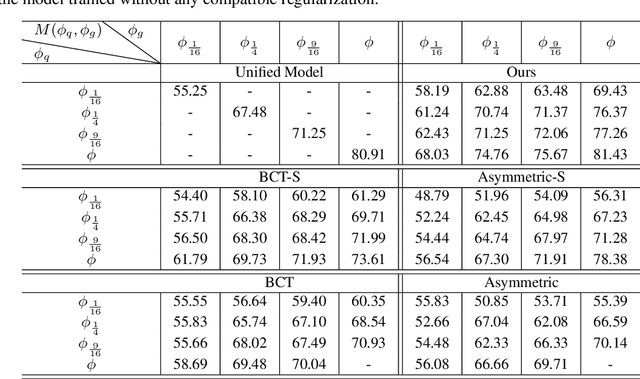
Abstract:Real-world visual search systems involve deployments on multiple platforms with different computing and storage resources. Deploying a unified model that suits the minimal-constrain platforms leads to limited accuracy. It is expected to deploy models with different capacities adapting to the resource constraints, which requires features extracted by these models to be aligned in the metric space. The method to achieve feature alignments is called "compatible learning". Existing research mainly focuses on the one-to-one compatible paradigm, which is limited in learning compatibility among multiple models. We propose a Switchable representation learning Framework with Self-Compatibility (SFSC). SFSC generates a series of compatible sub-models with different capacities through one training process. The optimization of sub-models faces gradients conflict, and we mitigate it from the perspective of the magnitude and direction. We adjust the priorities of sub-models dynamically through uncertainty estimation to co-optimize sub-models properly. Besides, the gradients with conflicting directions are projected to avoid mutual interference. SFSC achieves state-of-art performance on the evaluated dataset.
Neighborhood Consensus Contrastive Learning for Backward-Compatible Representation
Sep 09, 2021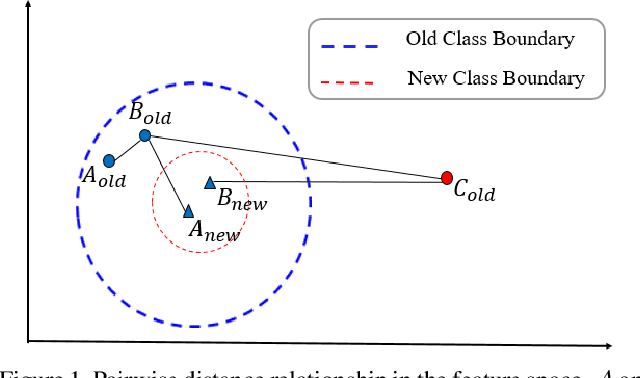



Abstract:In object re-identification (ReID), the development of deep learning techniques often involves model updates and deployment. It is unbearable to re-embedding and re-index with the system suspended when deploying new models. Therefore, backward-compatible representation is proposed to enable "new" features to be compared with "old" features directly, which means that the database is active when there are both "new" and "old" features in it. Thus we can scroll-refresh the database or even do nothing on the database to update. The existing backward-compatible methods either require a strong overlap between old and new training data or simply conduct constraints at the instance level. Thus they are difficult in handling complicated cluster structures and are limited in eliminating the impact of outliers in old embeddings, resulting in a risk of damaging the discriminative capability of new features. In this work, we propose a Neighborhood Consensus Contrastive Learning (NCCL) method. With no assumptions about the new training data, we estimate the sub-cluster structures of old embeddings. A new embedding is constrained with multiple old embeddings in both embedding space and discrimination space at the sub-class level. The effect of outliers diminished, as the multiple samples serve as "mean teachers". Besides, we also propose a scheme to filter the old embeddings with low credibility, further improving the compatibility robustness. Our method ensures backward compatibility without impairing the accuracy of the new model. And it can even improve the new model's accuracy in most scenarios.
Dual-Tuning: Joint Prototype Transfer and Structure Regularization for Compatible Feature Learning
Aug 06, 2021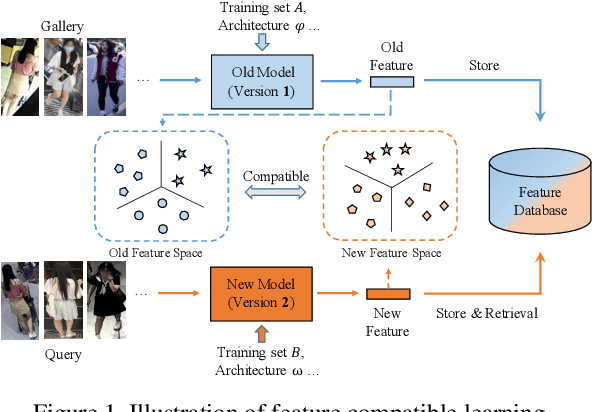

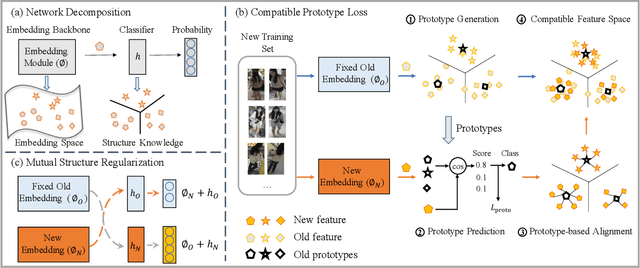
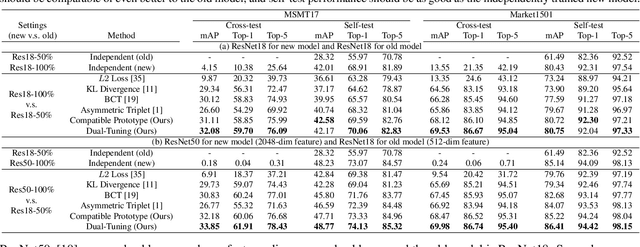
Abstract:Visual retrieval system faces frequent model update and deployment. It is a heavy workload to re-extract features of the whole database every time.Feature compatibility enables the learned new visual features to be directly compared with the old features stored in the database. In this way, when updating the deployed model, we can bypass the inflexible and time-consuming feature re-extraction process. However, the old feature space that needs to be compatible is not ideal and faces the distribution discrepancy problem with the new space caused by different supervision losses. In this work, we propose a global optimization Dual-Tuning method to obtain feature compatibility against different networks and losses. A feature-level prototype loss is proposed to explicitly align two types of embedding features, by transferring global prototype information. Furthermore, we design a component-level mutual structural regularization to implicitly optimize the feature intrinsic structure. Experimental results on million-scale datasets demonstrate that our Dual-Tuning is able to obtain feature compatibility without sacrificing performance. (Our code will be avaliable at https://github.com/yanbai1993/Dual-Tuning)
 Add to Chrome
Add to Chrome Add to Firefox
Add to Firefox Add to Edge
Add to Edge